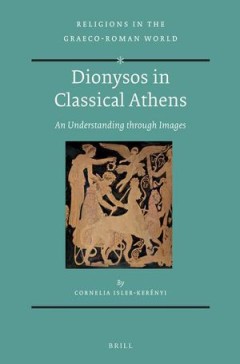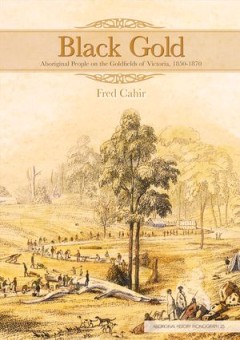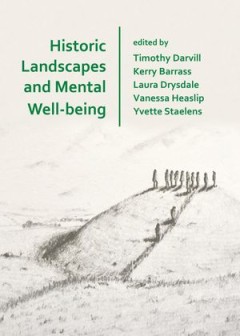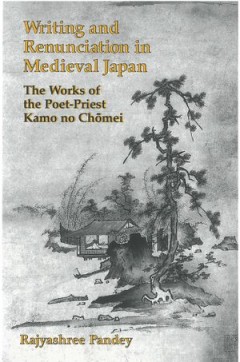Filter by

Dionysos in Classical Athens : An Understanding through Images
"Dionysos, with his following of satyrs and women, was a major theme in a big part of the figure painted pottery in 500-300 B.C. Athens. As an original testimonial of their time, the imagery on these vases convey what this god meant to his worshippers. It becomes clear that he was not only appropriate for wine, wine indulgence, ecstasy and theatre. Rather, he was present on many, both happy and…
- Edition
- -
- ISBN/ISSN
- 9789004270121
- Collation
- xx, 290 halaman
- Series Title
- Religions in the Graeco-Roman World, Volume: 181
- Call Number
- 900 ISL d

Black Gold : Aboriginal People on the Goldfields of Victoria, 1850-1870
Fred Cahir tells the story about the magnitude of Aboriginal involvement on the Victorian goldfields in the middle of the nineteenth century. The first history of Aboriginal–white interaction on the Victorian goldfields, Black Gold offers new insights on one of the great epochs in Australian and world history—the gold story. In vivid detail it describes how Aboriginal people often figured s…
- Edition
- -
- ISBN/ISSN
- 9781921862960
- Collation
- -
- Series Title
- Aboriginal history monograph ; 25
- Call Number
- 994.503 CAH b

Personal Agency and Swedish Age of Greatness 1560-1720
Internationally, the case of early modern Sweden is noteworthy because the state building process transformed a locally dispersed and sparsely populated area into a strongly centralized absolute monarchy and European empire at the beginning of the 17th century. This anthology provides fresh insights into the state-building process in Sweden. During this transitional period, many far-reaching ad…
- Edition
- -
- ISBN/ISSN
- 9789522228826
- Collation
- -
- Series Title
- -
- Call Number
- 948.5

Historic Landscapes and Mental Well-being
Using archaeological sites and historic landscapes to promote mental health well-being represents one of the most significant advances in archaeological resource management for many years. Its potential contribution to health-care and wellness initiatives is boundless. Prompted by the Human Henge project working within the Stonehenge and Avebury World Heritage Site, this volume provides an over…
- Edition
- -
- ISBN/ISSN
- 978-1-78969-269-3
- Collation
- -
- Series Title
- -
- Call Number
- 930.1 DAR h

Heritage Regimes and the State
What happens when UNESCO heritage conventions are ratified by a state? How do UNESCO’s global efforts interact with preexisting local, regional and state efforts to conserve or promote culture? What new institutions emerge to address the mandate? The contributors to this volume focus on the work of translation and interpretation that ensues once heritage conventions are ratified and implement…
- Edition
- Second, revised Edition
- ISBN/ISSN
- 978-3-86395-122-1
- Collation
- -
- Series Title
- Göttingen Studies in Cultural Property, Volume 6
- Call Number
- 930.1 HER

Writing and Renunciation in Medieval Japan: The Works of the Poet-Priest Kamo…
This is the first monograph-length study in English of Kamo no Chomei, one of the most important literary figures of medieval Japan. Drawing upon a wide range of writings in a variety of genres from the Heian and Kamakura periods, Pandey focuses on the terms kyogen kigo (wild words and fancy phrases), shoji soku nehan (samsara is nirvana), hoben (expedient means), and suki (single-minded devoti…
- Edition
- -
- ISBN/ISSN
- 9780472901890
- Collation
- -
- Series Title
- -
- Call Number
- 909.81 PAN w

Tales of Times Now Past: Sixty-Two Stories from a Medieval Japanese Collection
Tales of Times Now Past is a translation of 62 outstanding tales freshly selected from Konjaku monogatari shu, a Japanese anthology dating from the early twelfth century. The original work, unique in world literature, contains more than one thousand systematically arranged tales from India, China, and Japan. It is the most important example of a genre of collections of brief tales which, becaus…
- Edition
- -
- ISBN/ISSN
- 9780472902118
- Collation
- -
- Series Title
- -
- Call Number
- 909.81 URY t

Information Fusion and Geographic Information Systems (IF&GIS' 2015) Deep Vi…
These Workshop Proceedings reflect problems concerning advanced geo-information science with a special emphasis on deep virtualization for mobile GIS. They present papers from leading scientists engaged in research on environmental issues from a modeling, analysis, information processing and visualization perspective, as well as practitioners involved in GIS and GIS applications development. Th…
- Edition
- -
- ISBN/ISSN
- 978-3-319-16666-7
- Collation
- VIII, 172
- Series Title
- -
- Call Number
- 910 INF

Chapter 16 George Orwell’s Dystopian Socialism
In this volume, John Farrell shows that political utopias—societies with laws and customs designed to short-circuit the foibles of human nature for the benefit of our collective existence—have a perennial opponent, the honor-based culture of aristocracy that dominated most of the world from ancient times into early modernity and whose status-based competitive psychology persists to the pres…
- Edition
- -
- ISBN/ISSN
- 9781032431574
- Collation
- 22
- Series Title
- -
- Call Number
- 900 THE f

Two Studies on Ming History
In the first study of Two Studies on Ming History , Charles O. Hucker presents an account of a military campaign that provides insight into the nature of civil officials' authority, decision-making, and relationship with the Ming court. In the spring and summer of 1556, a Chinese renegade named Hsü Hai led an invading group of Japanese and Chinese soldiers on a plundering foray through the nor…
- Edition
- -
- ISBN/ISSN
- 9780472901524
- Collation
- -
- Series Title
- -
- Call Number
- 951 HUC t
 Computer Science, Information & General Works
Computer Science, Information & General Works  Philosophy & Psychology
Philosophy & Psychology  Religion
Religion  Social Sciences
Social Sciences  Language
Language  Pure Science
Pure Science  Applied Sciences
Applied Sciences  Art & Recreation
Art & Recreation  Literature
Literature  History & Geography
History & Geography